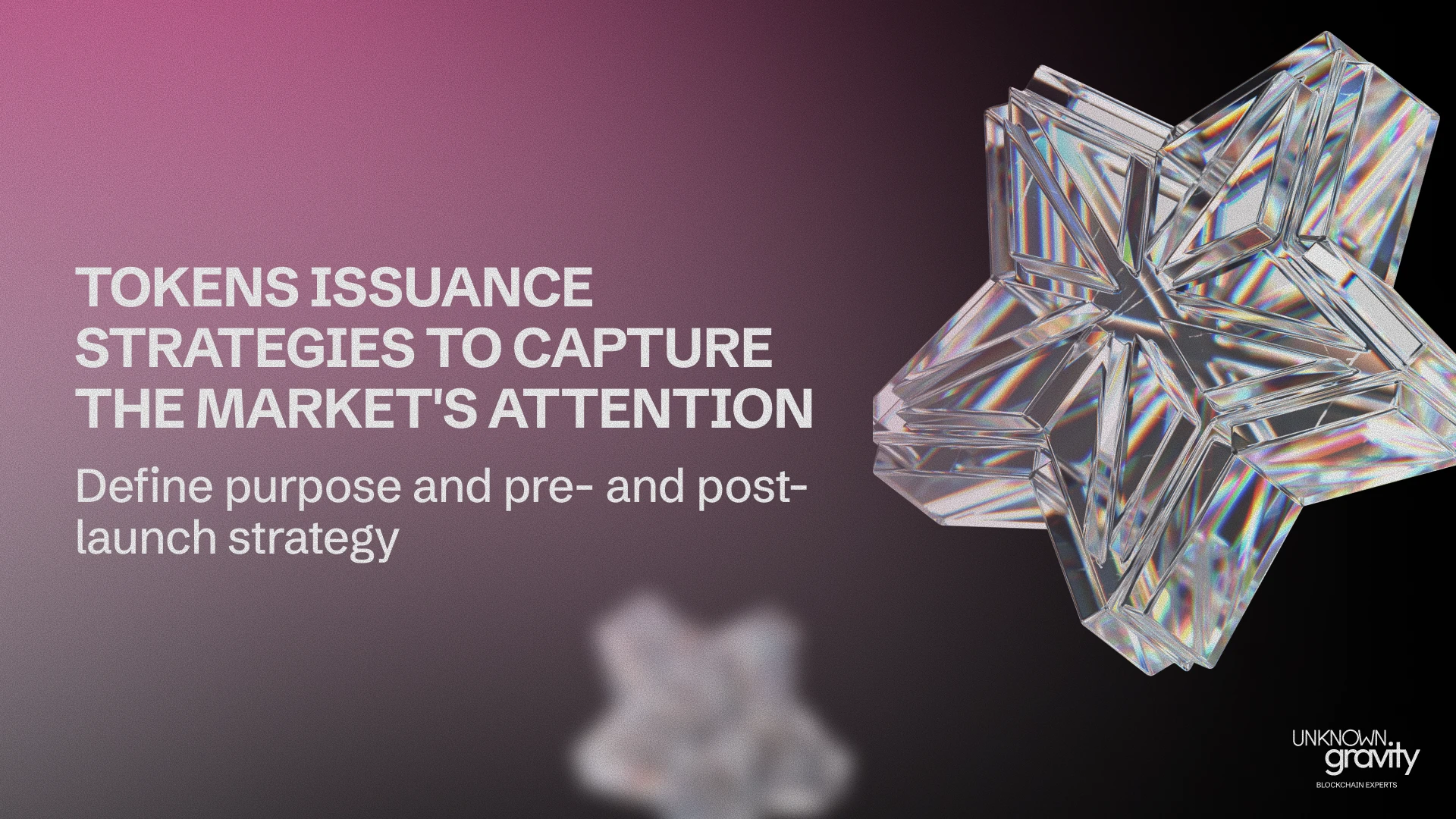Issuing a token isn't just a technical or legal process: it's also a high-impact marketing and communication operation.
Many blockchain projects fail not because of lack of technology, but because they launch to the market without strategy or preparation.
This article covers the fundamental strategies for a successful token launch, from brand narrative to community generation campaigns, to economic model design and regulatory compliance. An essential guide for those who not only want to issue a token, but to build a valuable and sustainable asset.
Before you release: Define the narrative and purpose
Before designing a marketing plan, you need to answer clearly:
- What real problem does your token solve?
- What value does it bring to the user or investor?
- What makes it different from other similar projects?
A clear narrative, aligned with a realistic and honest purpose, will be the foundation on which you will build the entire campaign. This narrative should be reflected in:
- Your website
- Your whitepaper or litepaper
- Your social profiles
- Your pitch decks or presentations
Advice: Avoid excessive technical language or empty hype. Instead of “revolutionizing the DeFi world”, explain how you'll facilitate faster payments in e-commerce, for example.
Marketing strategies for launching a token
Create community before launch
A strong community can't be improvised. Start at least 3-6 months ago of the public issuance of the token:
- Telegram/Discord: choose one as the main channel. It offers content, AMA (Ask Me Anything), consistent answers and transparency.
- Twitter/X: share previews, whitepaper teasers, collaborations, educational content.
- Waitlist campaigns: own tools such as Premint, Zealy or Launchpad to capture emails and create urgency.
Real example: The Celestia project generated a highly engaged community before launch, combining educational publications with encouraged testnets.
Collaborate with opinion leaders and media in the industry
- Identifies KOLs (Key Opinion Leaders) of the ecosystem where you will launch (for example, DeFi, gaming, real estate, etc.)
- Secure mentions or articles in specialized media such as Cointelegraph, BeInCrypto, CoinDesk, Criptonoticias or The Defiant.
- Create “earned” content (organic posts, reviews, interviews) more than just paid ads.
Design a content strategy
Your audience should understand the project, not just the token. Apply an educational marketing strategy that includes:
- Explanations about how the token works (tokenomics)
- Use cases and practical examples
- Video demos or tutorials
- Infographics or comparisons
Recommended format: weekly blog + Twitter thread + reel/short on Instagram or YouTube.
Economical design: make sure the model makes sense
There's no marketing to save a poorly designed token. The key points to validate before launching:
- Total supply and distribution: How many tokens are there? Who gets how much and when?
- Unlocking schedule (vesting): prevents early cash outages.
- Real Uses: Does the token allow something useful or does it only serve to speculate?
- Clear incentives: Are there benefits to participating, using or maintaining it?
Key fact: According to Messari, more than 80% of tokens lose value in the first 3 months if there is no clear utility or an active community.
The timing of the launch: How to make an impact
1. Choose the right format
- ICO or IEO: allows you to raise funds directly. It requires regulatory compliance.
- Airdrop token: distribute free tokens to users for engagement or tasks. Ideal for creating fast community.
- Fair Launch: without private pre-sales. The token is launched open to the market for everyone at the same time.
- Token gated access: limited whitelist access, encouraging exclusivity.
2. Coordinate “day zero”
Everything must be ready for the same moment:
- Publication in the media and social networks
- Listed on platforms such as CoinGecko and CoinMarketCap
- Available technical documentation (whitepaper, audited smart contracts)
- Open communication with the community to answer questions live
Advice: Use platforms such as Unicrypt, CoinList or Gnosis Auction to organize pre-sales or distribution if you don't have your own platform.
Post-launch: maintaining attention and trust
The launch isn't the end, it's the beginning. The following steps are key to sustaining the value of the token:
- Regular updates: public roadmap, publications on advances and problems.
- Real staking or utility: that users can use or keep the token for tangible benefits.
- Sustainable liquidity: avoid “pump and dump”. Establish repurchase or treasury policies if necessary.
- Support and active listening: make your community feel part of the project, not just investors.
Common Risks to Avoid
- Inflationary tokenomics: without limitations, the value is rapidly diluted.
- Lack of regulation: many projects are suspended for not complying with local regulations.
- Too much hype, too little execution: Beware of creating expectations that you can't meet.
- Investors without onboarding: if your community doesn't know how to buy or use the token, it won't.
Conclusion
Successfully launching a token is a balanced mix between product strategy, legal compliance, effective marketing, and a coherent narrative.
It's not enough to issue a token: you have to Creating Trust, Utility and Community.
Those who plan and execute these elements professionally not only achieve a good launch, but they also build sustainable ecosystems and projects with real projection.
Do you need help launching your token?
In Unknown Gravity we help you define the model, audit the smart contract, plan marketing and build community.
Request a consultancy without obligation.
















.webp)
.webp)





































.png)
.webp)
.webp)
.webp)
.webp)
.webp)
.webp)
.webp)
.webp)
.webp)
%20(1).webp)
.webp)
.webp)
.webp)

.png)
.png)
.png)



